Persian art, often known as Iranian art, is a broad category of visual arts that includes calligraphy, weaving, ceramics, painting, sculpture, and metalwork. As the historical realm of Persia expanded, Persian art exchanged and absorbed numerous influences from its neighbors, which had an impact on the aesthetic of the works produced. One of the finest artistic traditions in the world is Persian art, whose first influences date back to 550 BCE.
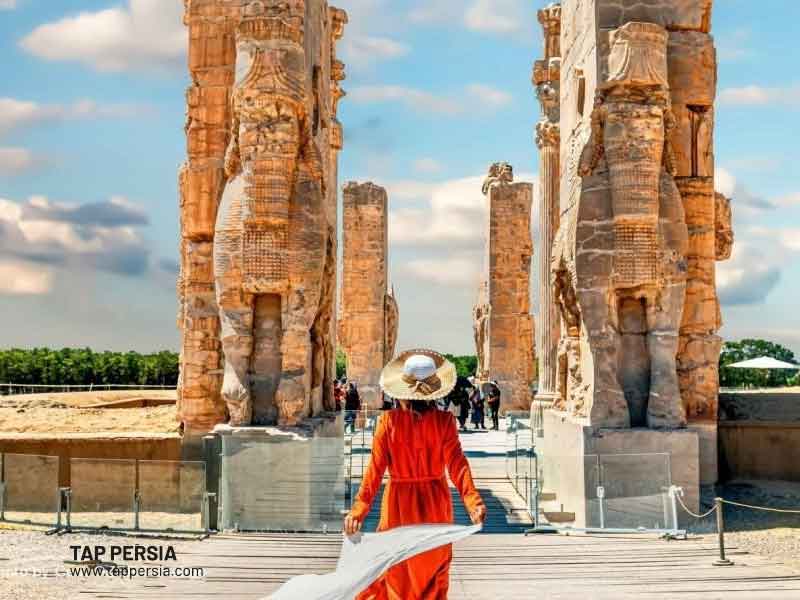
A History of Persian Art
One of the first cultures and communities said to have experimented with the creation of art was found in Persia, one of the oldest nations in the world. Small bronze artifacts and delicate ceramic pieces are examples of early Persian artworks that show a diversity of aesthetic influences from neighboring nations.
The kingdom of Persia in what is now Iran established a huge empire that spanned from the Indus Valley to Northern Greece and from Central Asia to Egypt in the second half of the sixth century BCE.
The Persian art period, which is said to have one of the longest histories of origin in the history of art, is considered to have started with the First Persian Empire, also known as the Achaemenid Empire, which flourished from 550 and 330 BCE.
When it first emerged, Persian art drew its influence from earlier civilizations like Mesopotamia, with whom it coexisted for the majority of Antiquity. This had an effect on Persian art in that a rich cultural past started to emerge, which was evident in the works that were produced. Persia was a huge empire that was first founded by Cyrus the Great.
It lasted for three major periods and expanded its dominion throughout Central Asia and all of Asia Minor. Persian art was inspired throughout its reign by Chinese art, Greek art, and notably Sumerian art. The impact of classical Chinese characteristics may be seen in Persian miniatures, which were little paintings created on paper as either a book illustration or a freestanding piece of art.
When tracing the development of Persian art, it can be argued that the pieces that were created were a stylistic synthesis of Egyptian, Mesopotamian, Roman, classical Greek, and Native Persian traditions, and Persian art. This was due to the fact that each new culture that formed in Persia strongly influenced the art of earlier civilizations.
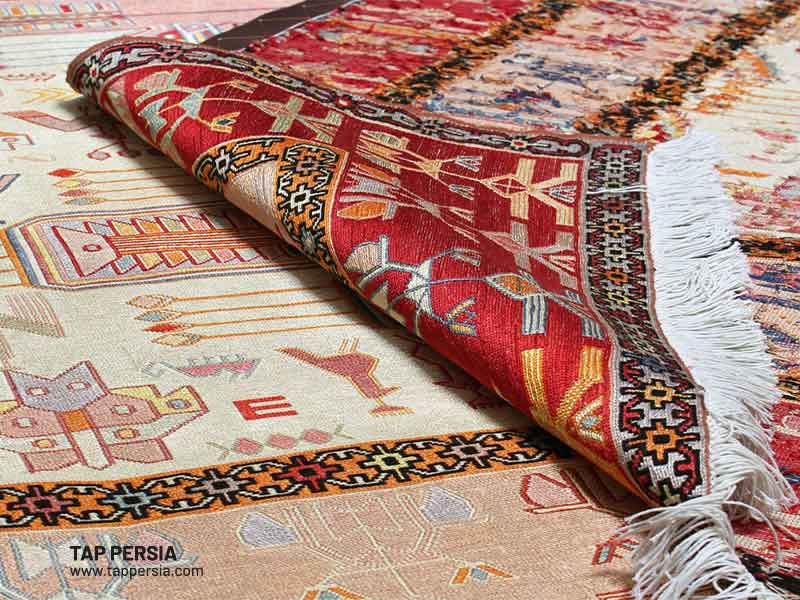
After the First Persian Empire fell, Islam began to become the dominant religion in Persia. As time went on, an Islamic aesthetic emerged, which had a greater impact on the kinds of sculptures and artworks produced. As Persian art shifted its emphasis to an incredibly graceful and harmonious style, animals started to be shown on a much smaller scale than the flora that surrounds them and were also blended with delicate Chinese patterns.
Unfortunately, hardly much of the Persian art that was produced has survived the centuries. The architecture that has persisted today is mostly made up of decaying palaces and rock-cut tombs, despite the fact that some of the characteristic Persian artwork has been preserved in wall reliefs, column capitals, and metal works. The fact that no examples of the innumerable old Persian paintings still remain now may be the biggest regret from this magnificent time of art history.
Early Persian Art
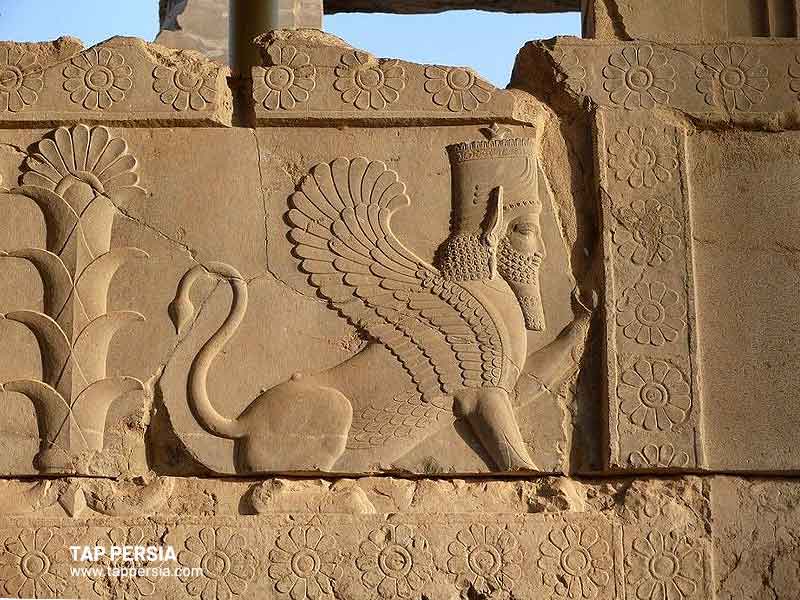
Over three significant eras in the history of the area, Persia and its art came into being. Within those phases, two key Persian cultural eras emerged: The First Persian Empire, also known as the Achaemenid Empire, and the Second Persian Empire, also known as the Sassanid Empire. The third era sometimes referred to as the Parthian Era, acted more as a time of transition between the two empires.
Persia joined the Islamic world after the end of the Sassanid era and has been there ever since. The changes and developments that took place in Persia’s culture at that time are what lead to the description of the art that emerged from this last stage as having a definite Islamic influence.
Achaemenid Art Architecture
Frieze reliefs, metallurgy, palace ornamentation, glazed brick masonry, exquisite workmanship (masonry, carpentry, etc.), and horticulture are all examples of Achaemenid art. The majority of court art’s surviving examples are huge sculptures, including double-headed Persian column capitals, Persepolis’ reliefs, and other sculptures.
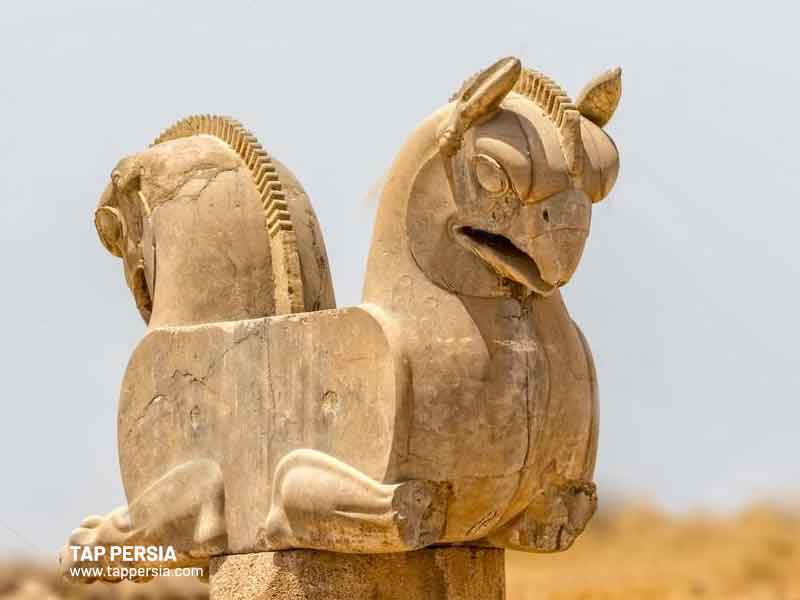
Even though the Persians imported artists, along with their styles and methods, from all parts of their empire, they synthesized a new, distinctive Persian style rather than just combining several types. The exquisite Achaemenid gold workmanship, which inscriptions suggest may have been a Medes specialty, was, for instance, a practice of earlier locations. Cyrus the Great really had a rich ancient Iranian history behind him.
The most prevalent sort of massive metalwork to survive, as seen in a beautiful specimen in New York, is the rhyton drinking cup, which is horn-shaped and typically ends in an animal shape. The Oxus Treasure carries a variety of very exquisite little pieces of jewelry or inlay made of precious metal, most of which feature animals. The wealthy sewed tiny embellishments, usually made of gold, to their garments, and several of these gold torcs have remained.
Parthian Era Art Architecture
Iranian and Hellenistic art forms were combined in Parthian artwork. The Parthian Empire ruled over several regions outside of what is now Greater Iran between 247 BC and 224 AD. During excavations, Parthian sites are commonly overlooked, and it can be difficult to distinguish them from other levels.
Since dating is challenging and the most significant remains originate from the outside of the empire, including at Hatra in contemporary Iraq, which has generated the biggest amount of Parthian sculpture ever excavated, the study situation and state of knowledge on Parthian art are still quite spotty.
If you’d like to know more about the captivating charm of Iran during the fall, consider reading our piece on Discovering Iran’s Ancient Marvels in Autumn.
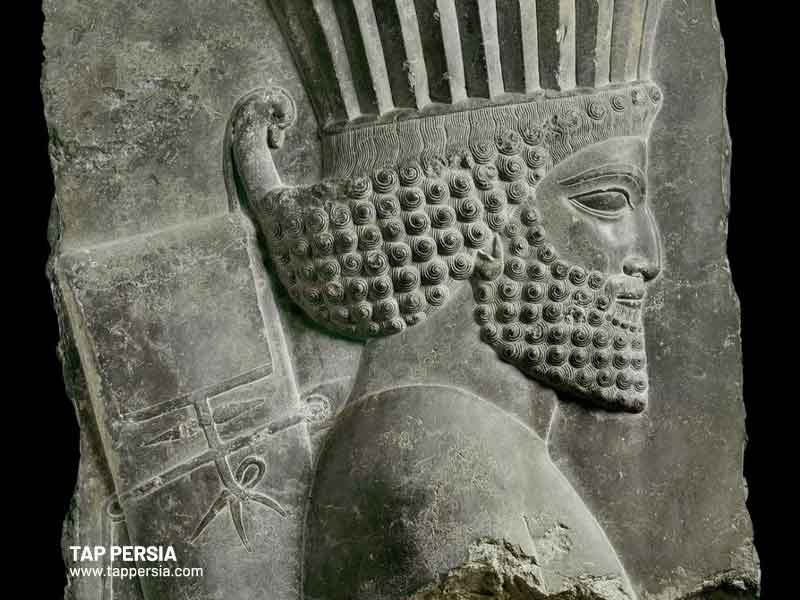
Art in this style persisted in the surrounding regions for some time even after the Parthian dynasty. Figures stare frontally out to the audience rather than at each other in narrative depictions, a trait that predates the art of medieval Europe, Late Antiquity and Byzantium. The attire, which is portrayed in full-length figures covered with intricate decorations, likely stitched, including gigantic figures, is given great attention to detail.
Frontality, which is not unique to Iranic or Parthian art and originally appears in Palmyran art, is the defining quality of “Parthian” art. There are questions regarding whether this art can be referred to as “Parthian” art or that it belongs to any specific geographic place; for instance, there is no proof that it was produced outside the Middle-Euphrates region and subsequently transported to Palmyra.
This form of art is best understood as a Middle Euphrates region-specific local development. Above is a discussion of Parthian rock reliefs.
Plaster patterns were quite popular in buildings, but virtually all of them have already been gone. Large surfaces were covered with them after the technology was perfected, and it’s possible that some of their design aspects were inspired by carpets and other fabrics, which are now almost totally destroyed.
The Achaemenid rhyta were continued in the Parthian period, although the animals at the terminal (or protome) are more realistic and perhaps include Greek influences.
Sassanid Era Art Architecture
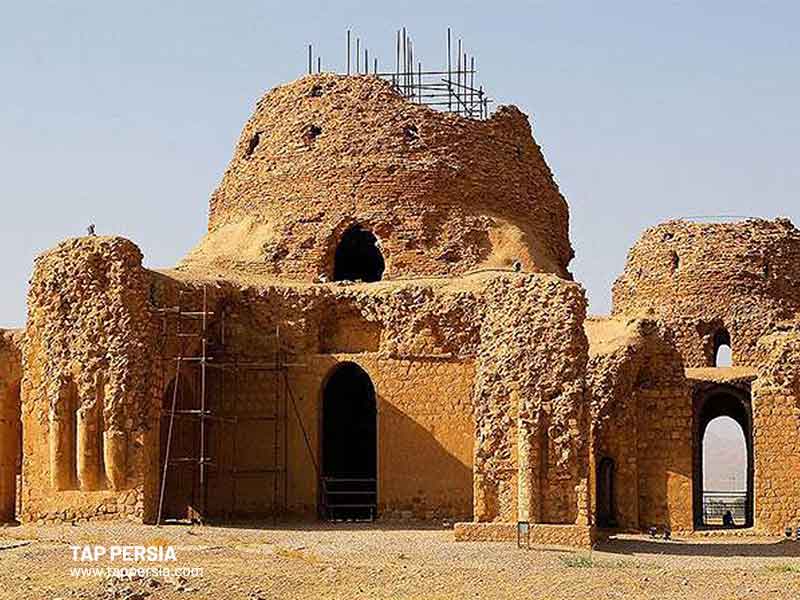
Before the Muslim invasion of Persia was finished in the year 651, the Sasanian Empire, which governed from the third to the seventh centuries AD, created Sasanian art. Ardashir I overthrew the final Parthian king in 224 AD. For the following 400 years, the next Sasanian dynasty ruled modern Iran, Iraq, and a number of regions to its east and north.
It ruled portions of Egypt, Arabia, the Levant, and most of Anatolia at various points in antiquity. It signaled the beginning of a new era in Mesopotamia and Iran that was heavily influenced by Achaemenid traditions, notably the period’s art. But the art of the time was also influenced by other sources, including those from as far away as China and the Mediterranean.
There are some surviving paintings from what was obviously a mass production, but Sasanian art is best appreciated in its architecture, reliefs, and metalwork. There were possibly many more inside plaster reliefs than there were stone ones, of which just a few pieces have remained.
In contrast to the Parthian era, free-standing sculptures were less popular during this time. One notable exception is the Colossal Statue of Shapur I (r. AD 240-272), which was carved from a stalagmite that had formed in a cave.
There are also literary references to other, now-lost, colossal statues of kings. The significant Sasanian rock reliefs are discussed above, while the Parthian tradition of molded stucco building ornamentation continued to include significant figurative images.
Step back in time and witness the splendor of Iran’s ancient monuments, beautifully accentuated in the fall. 🍁 Dive into this enchanting journey by clicking on our featured article on Tappersia’s website.
Persian Architecture
The architecture that emerged throughout the Persian art era had a significant role in the enormous advancements that are still evident today.
According to legend, the Persepolis, which was constructed during the Achaemenid Period, has the largest collection of architectural remains from all of the empires that ever controlled Persia.
Iran’s capital was recognized as being at Persepolis during the First Persian Empire. Subsequent dynasties tried to imitate the style of building that was created.
The column is a significant element in Iranian Art when analyzing the particular features that emerged from Persian architecture. Despite being modeled after Greek columns, Persian sculptors and artisans gave their creations a distinctive twist that made them uniquely their own.
Persian columns had a unique uppermost portion design known as the Persian animal capital that distinguished them substantially from Greek columns by having an animal’s front protruding from both sides of the column. Persian columns were also thinner, which lengthened their feeling of verticality.
The column was different between the First and Second Persian Empires as well. The Sassanid Empire had an arched support system, which was influenced by the Romans, but the columns of the Achaemenid Empire had a post-and-beam support structure.
Persian Sculpture
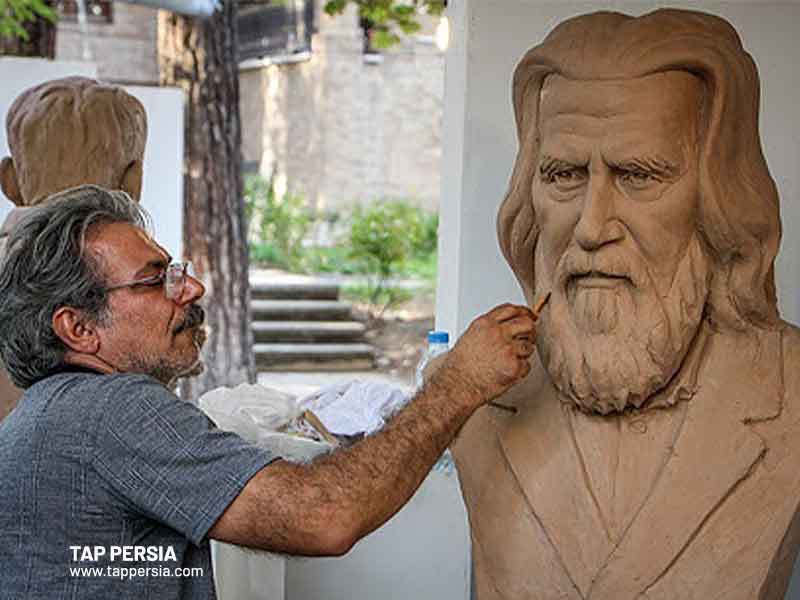
Sculpture was one of the most significant aesthetic developments in Iranian Art. Fortunately, many Persian sculptures have endured over the ages, largely in the form of stone reliefs that were carved onto cliff sides and palace walls.
The sculptures’ inspirations ranged widely; some of the surviving examples of Persian art show a significant Mesopotamian influence, while others have remarkably traditional European traits.
The characteristics of a sculpture varied greatly depending on the culture of influence, ranging from extremely stylized to quite realistic. The sculptures that were discovered in Persia, therefore, combined two opposing aesthetics, although they were all agreed to be exclusively Persian sculptures.
Despite relatively few of these sculptures having survived the test of time, Persia was also the source of the great majority of metalwork sculptures that arose during this era in addition to stone sculptures. Metal was often worked into jewelry, statuettes, and rhytons, which were goblets and pitchers decorated with animal motifs.
Persia Under Islam
Persia was conquered by Arabs when the Sassanid Empire fell, which led to its incorporation into Islam. As a result, Persian visual arts evolved in accordance with the more recent Islamic laws, which resulted in a change in the artistic production process. One of these regulations forbade the representation of three-dimensional living objects, which immediately caused a fall in Persian sculpture.
Decorative Iranian arts like as metalwork, weaving, and pottery continued to flourish despite the decline in sculpture output. The Great Mosque at Samarra (847 CE), the Imam Reza shrine in Mashhad, and the Mosque of Baghdad (764 CE) were among the Islamic temples embellished as a consequence of artists focusing on ornamental aspects (1418).
Mosaics were frequently employed in mosques and other structures in addition to these embellishments. Making colorful roofs out of ceramic tiles with blue, red, and green hues was another well-liked Persian architectural style that survived Islamic dominion.
Famous Persian Artists and Their Artworks
Iranian art has a lengthy history dating back many centuries. As a result, over time, many of the names of the early painters disappear. However, a few individuals deserve to be mentioned here since they are still well-known when it comes to contemporary Iranian art.
Kamāl ud-Dīn Behzād (1455 – 1536)
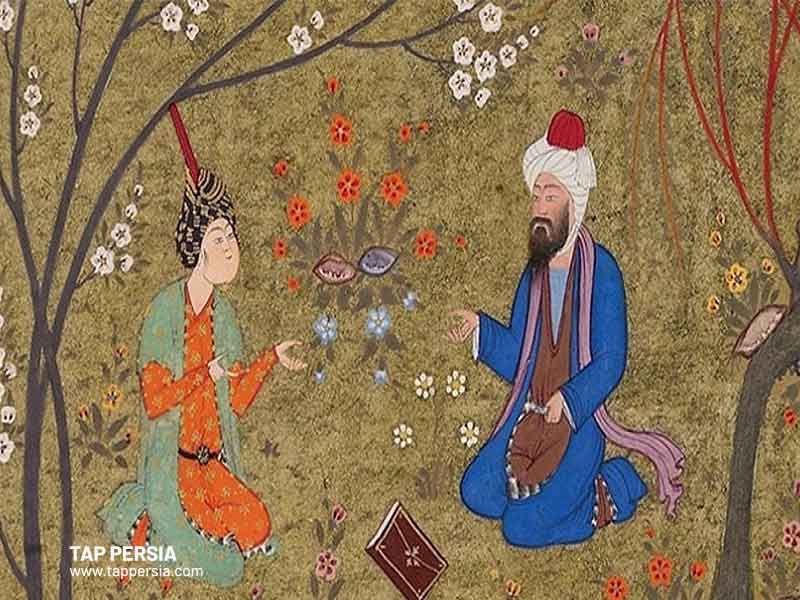
Famous Persian artist Kamal ud-Din Behzad’s miniaturist style and work as a teacher had a big impact on Persian Islamic painting. He was raised in Herat by the artist Mirak Naqqash, who had the patronage of the Timurid kings who oversaw the city, after becoming an orphan when he was a little boy. Behzad received training under his supervision before he named him director of the Herat school in 1486. He held that position until 1506. The organization rose to prominence as a major artistic hub under his direction.
Additionally, he established himself as the gold standard of excellence in his own time, and patrons of the day would identify high-caliber works as being by Behzad with little to no proof. Only 32 paintings, all of which were finished between 1486 and 1495, have been definitively attributed to Behzad.
Despite the fact that Behzad’s work did not significantly break from earlier forms, his technical proficiency, originality in arrangement and dramatic portrayal, as well as his extraordinary command of color, made him the leading figure in painting at the time. He was able to do it in a way that was characterized by harmony, humanism, and grace, freeing the miniature from rigidity in presentation and an obsessive obsession with detail.
The five miniatures he created in a manuscript that was copied in 1488 and is now preserved in the Egyptian National Library are regarded by many scholars as the best examples of his work that have survived.
Behzad’s image of the Khawarnaq citadel’s construction, finished around 1494, expertly exemplifies his ability to render a complex scene in a rich and flowing composition. The work exhibits painstaking attention to detail and the capacity to express dazzling details while minimizing superfluous information.
Farrukh Beg (1547 – 1615)
Throughout his career, “Farrukh Beg” used his relationships with various regions in West Asia and metropolitan courts in South Asia, as well as inventive methods and clients, to hone his artistic ability.
Beg’s early work is notable for its similarity to the Persian painting vocabulary developed under Safavid control, particularly by Shaykh Muhammad and Mirza Ali, which he perfected under Safavid patronage before traveling to Mughal India.
“Beg” used the creative abilities he had acquired in Safavid Iran to the paintings he created for the Mughal court. Beg continued to represent patterned and beautifully detailed building backdrops, geometric shapes in contrast to sinuous trees, lighted gold sky, and complicated landscapes with bent and patterned flora while using color to separate and balance the composition.
His revered stature at the Mughal court allowed him to devote his creative talent to his work since his exclusive position allowed him to work alone on every painting between 1586 and 1596.
Reza Abbasi (1570 – 1635)
Reza Abbasi was the son of a painter who worked in the prince’s palace, the main institution in Iran at the time for the support of the arts. Shah Abbas first became aware of Reza Abbasi’s creative prowess while he was a young man, and by 1596, he was acknowledged as being without a peer. Soon after, he started hanging around with undesirable people, spending a lot of time with athletes and wrestlers while paying little attention to his business. The shah is said to have always struggled with money despite his kindness and favor.
He was able to rebound significantly and keep up his productive and innovative work until his death in 1635. Figures in exaggerated poses are drawn with elegantly flowing lines and colored in an expressionist, nonrealistic style, showcasing his highly stylized technique. Even if the works from the second phase are rougher and more affected, it nevertheless stays novel and noteworthy.
The Emergence of Persian Carpets
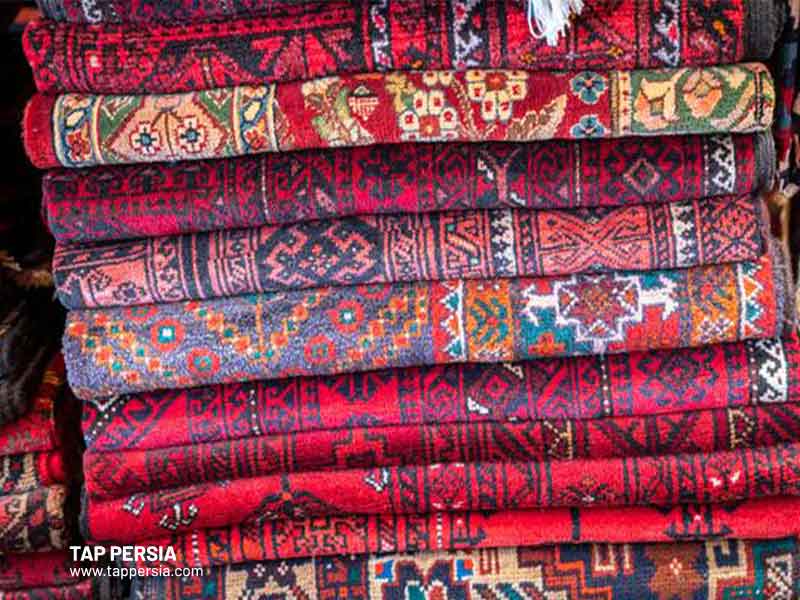
They were initially woven more than 2,500 years ago to cover the flooring for the local nomadic tribespeople. Village rug weavers in Persia produced the first Persian carpet. Because contemporary furniture had not yet been created, people would utilize them as useful pieces of furniture.
Due to their large sheep herds, the tribes back then had little trouble creating carpets. They got their wool from there, which they used to produce carpets for both themselves and other people. The first weavers of Persian carpets used the rugs for their own personal usage in their houses as beds, chairs, and tables. These early rug weavers refined their unique trade and techniques and passed them on to later weavers.
With the resurgence of traditional and natural dyes, as well as the restoration of tribal patterns and new, imaginative designs, this style of old Persian art has been reinterpreted in the present period. As they were in the past, Persian carpets are still regarded as having significant artistic and practical importance today.
The Legacy of Ancient Persian Arts
The development of Islam in Iran during the 7th century CE followed the fall of the Sasanian Empire in 651 CE, and it is still the country’s predominant religion today. As a result, certain old Persian religions, like Zoroastrianism, have unfortunately been repressed over time. In an effort to firmly establish an Islamic worldview in the growing Iran, several Persian customs and civilizations were also pushed aside.
Despite this, some features of Persian art and architecture were able to endure during this time of intense turmoil in the nation because some of these components eventually influenced and guided the creation of Islamic art.
Iranian art continues to extensively draw on earlier customs that were widespread during the Persian Empires, with specific elements showing up in a variety of made-up artworks. The weaving of traditional Persian carpets is an illustration of an artistic achievement that has lasted the test of time.
Influence of Neighboring Civilizations on Persian Art
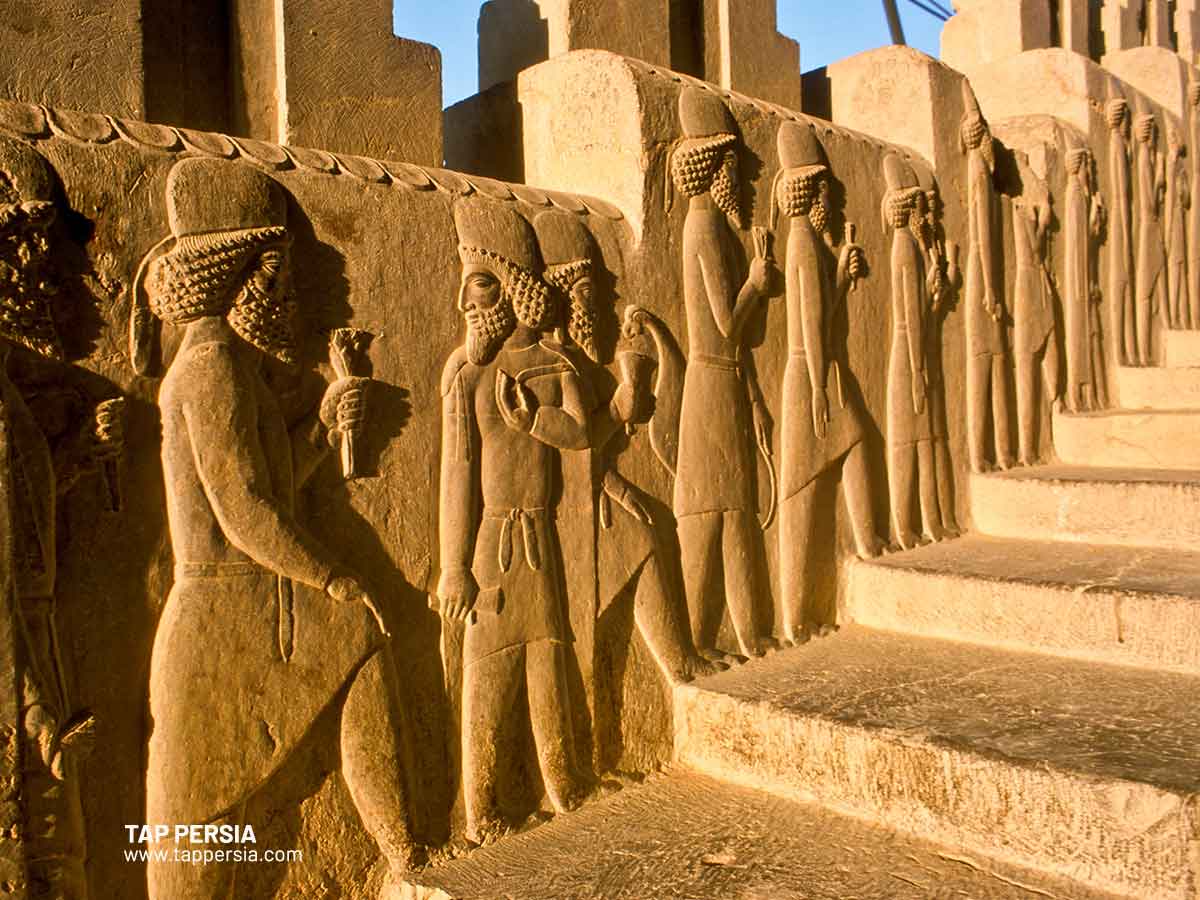
For thousands of years, nearby civilizations have had an impact on Persian art. Mesopotamian, Egyptian and Greek art were all introduced to the ancient Persian, and their influences may be observed in their architecture, sculpture and decorative arts.
The art of the Babylonians and Assyrians had a significant impact on the Achaemenid Empire, which resigned over a large portion of the Middle East from the sixth to the fourth century BCE. The Sassanian Empire, which ruled from the 3rd to the 7th century CE, was subsequently influenced by Roman and Byzantine art.
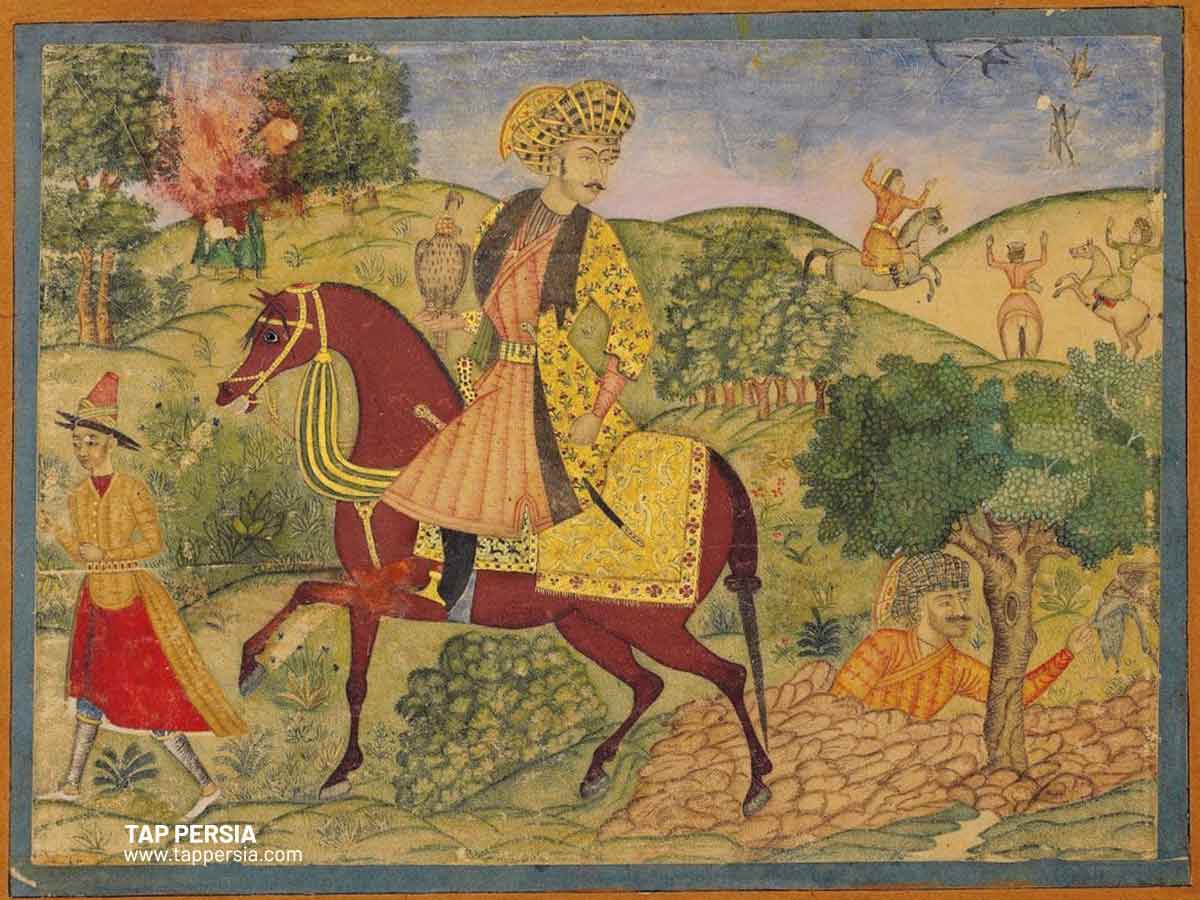
Calligraphy and geometric patterns were among the new creative influences from the Arab culture introduced by the Islamic conquest of Persia in the seventh century CE. Despite these external influences, Persian art has remained distinctive and is still praised for its complex patterns and vivid colors.
The Impact of Chinese Art on Persian Miniatures
Chinese art has really had a significant effect on Persian miniatures, especially during the Safavid era in the 16th and 17th centuries. The Safavid emperors imported Chinese paintings, pottery and carpets due to their fascination with Chinese art. Persian miniature painting is a good example of this influence and it can be seen in integrating Chinese elements like clouds, dragons and floral designs.
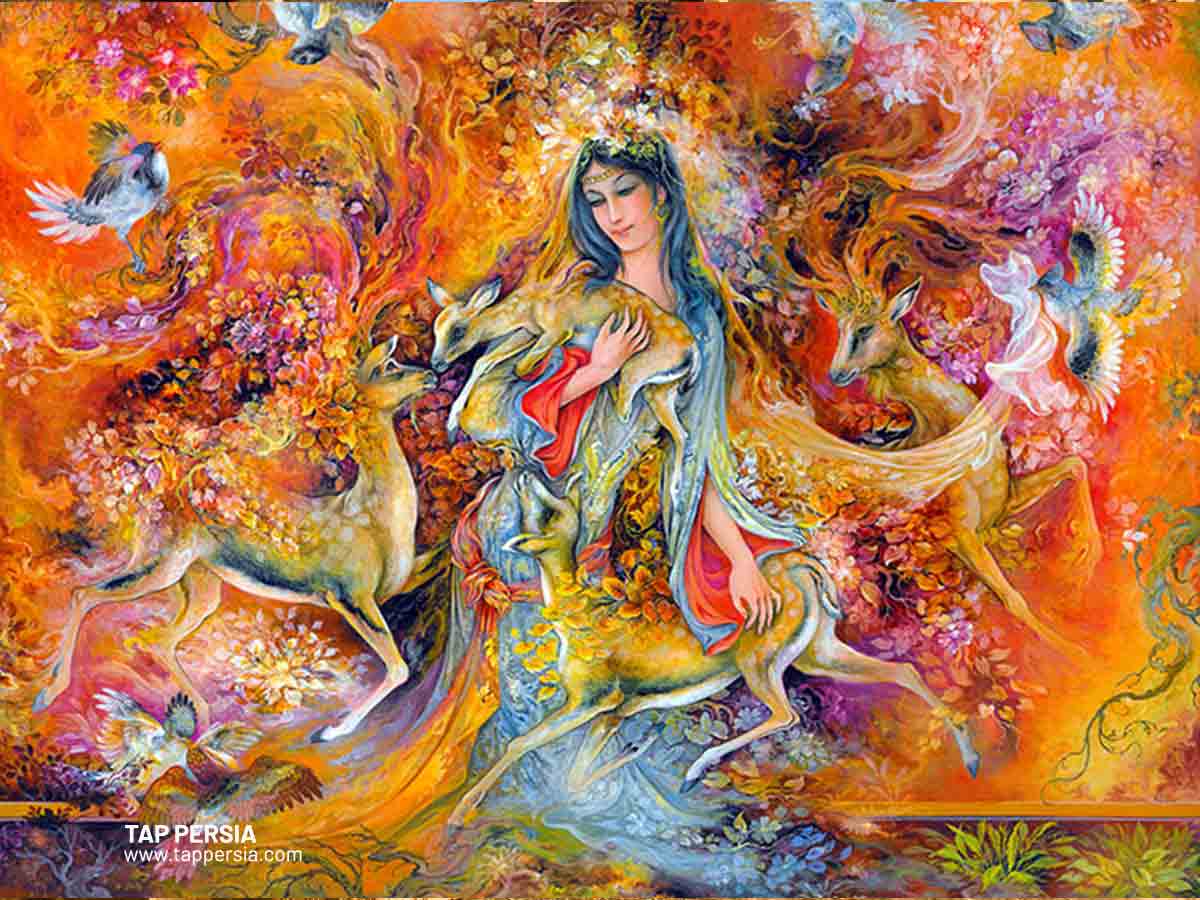
Persian miniatures began to make use of shade and perspective more often, which reflects the impact of Chinese landscape art. However, Persian miniatures continued to represent events from Persian history and literature with vivid colors and intricate details, which kept their distinctive and unique aesthetic. A distinctive and stunning kind of art that is still valued today was created by fusing the aesthetic traditions of China and Persia.
The Evolution of Persian Art
We have provided information about the evolution of the Persian art in each era:
The Achaemenid Empire
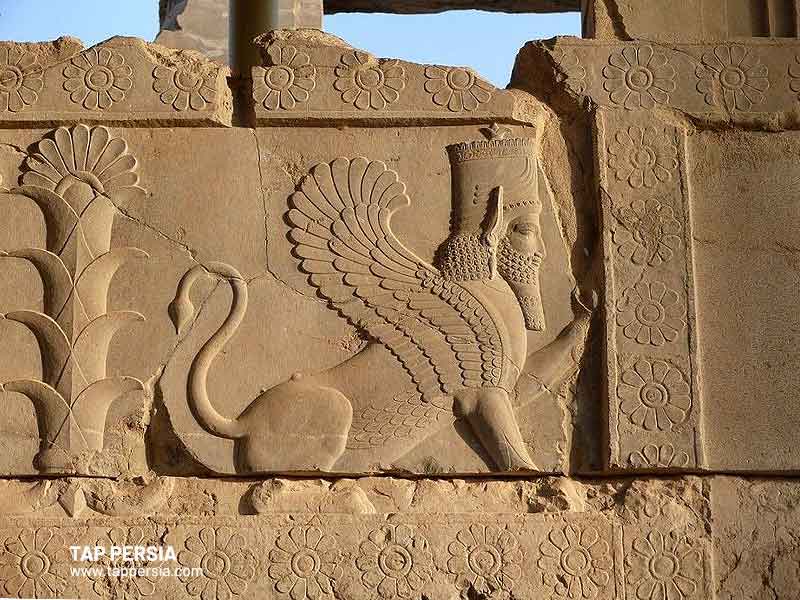
The Achaemenid Dynasty, which existed in Western Asia from 550 to 330 BCE, was a significant Iranian power. The empire was renowned for fusing parts of numerous foreign cultures into its eclectic style of art and architecture. The empire held sway from the Indus Valley to Thrace and Macedon. Not only did the Achaemenid Dynasty have a significant military impact, but it also left a significant social and cultural legacy. The growth of Achaemenid art and architecture, which were linked and mirrored skills from diverse sections of the empire, was one of its greatest accomplishments.
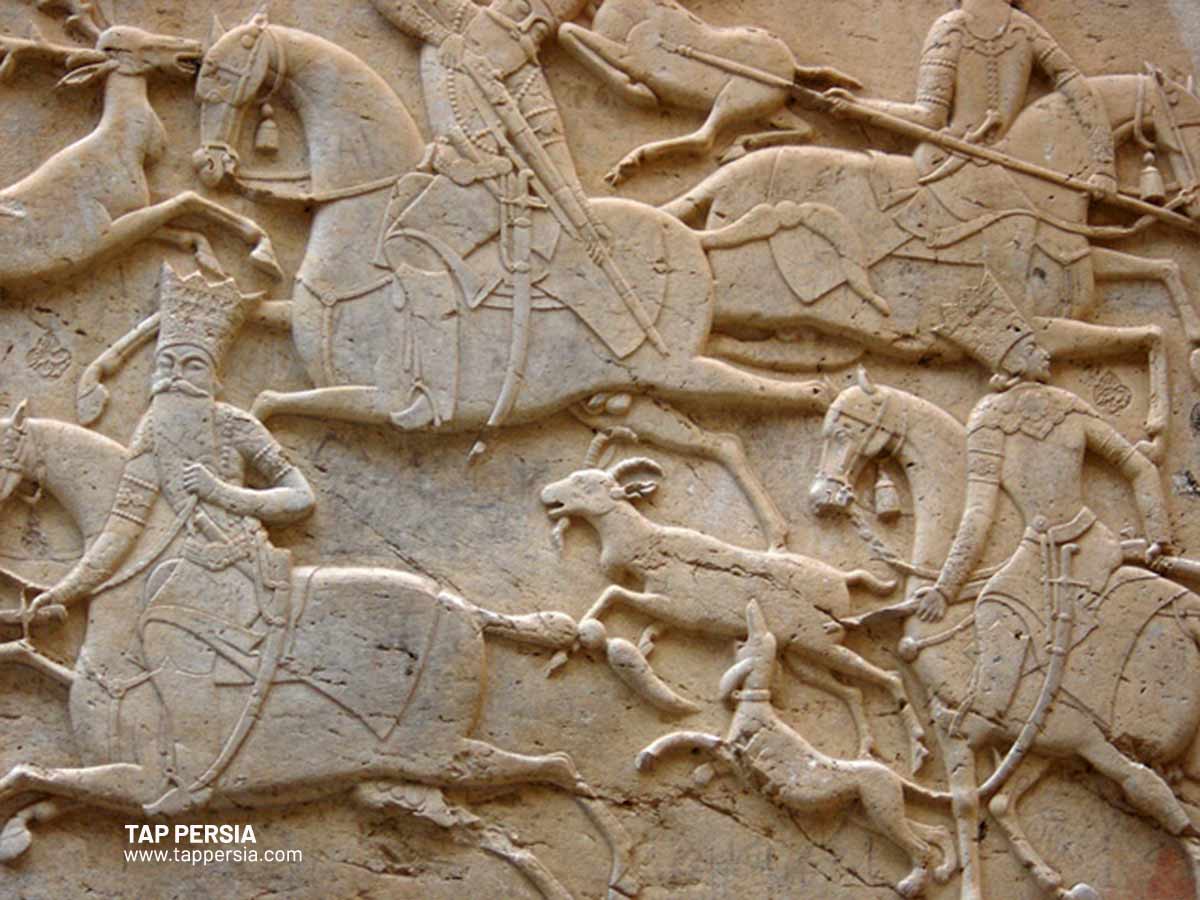
They were adept in making intricate frieze reliefs, working with precious metals, building palaces and landscaping. The distinctive Persian style was distinguished by its eclectic composition of Media, Assyrian and Asiatic Greek components.
The Parthian Era
Persian art moved to the Parthian Era, a transitional era between the First and Second Persian Empires after the Achaemenid Empire was overthrown by Alexander the Great in 330 BCE. Greek and Iranian elements coexisted at this time, with Greek culture momentarily predominating. The Parthians, who assisted in reviving Persian art and architecture after Alexander’s death, had an effect on Persian art after his death. The Parthians were initially semi-nomadic, and their artwork represented several geographical areas.
Despite its variety, Parthian art preserved several characteristics from earlier Achaemenid works of art. The return to architecture and frontality, which replaced side profile representations with sculptural figures, were the fundamental characteristics of Parthian art. Parthian art is distinctive because it was greatly inspired by Hellenistic and Mesopotamian traditions.
The Sassanid Era
Ardashir I rose to power during the Sassanid era, launching large construction initiatives that are still considered some of the finest examples of Sasanian art to this day. Sculptures from the Parthian Era’s frontality were abandoned by the Sasanians, who instead adopted the profile and three-quarter view style that had been popular during the Achaemenid Era.
Rock sculptures cut from limestone cliffs, beautiful stone mosaics, and gold- and silver-plated dinnerware were the mainstays of Sasanian art. Silk weaving and carpet-making were also developed during the Second Persian Empire, which led to the famous Persian carpets being shipped to Istanbul in the West and to Turkey in the East.
The Importance of Architecture and Sculpture in Persian Art
The largest collection of Persian art, which was uncovered in the ruins of Persepolis during the Achaemenid Period, had a profound impact on architecture. The capital of the First Persian Empire was Persepolis, which succeeding dynasties attempted to replicate. Persian architecture stands out for its smaller columns, lengthening verticality, and peculiar uppermost section design.
The Persian animal capital, also called the Persian animal capital, was distinct from Greek columns because it had an animal’s face on it. The First and Second Persian Empires had different styles of columns, with the Sassanid Empire utilizing an arched support structure and the Achaemenid Empire using a post-and-beam framework.
Numerous stone reliefs may be seen in palaces and on cliff walls, and Persian sculpture has a long history. Persian sculptures fluctuate between realistic and stylized shapes, drawing on Mesopotamian and European influences. Along with that, Persia created a large number of metalwork sculptures, including statuettes, jewelry, goblets, pitchers, and rhytons with animal patterns. There aren’t many surviving examples, but those that do reveal a wide variety of inspirations and styles.
The Impact of Islam on Persian Art
Following the fall of the Sassanid Empire, Persia converted to Islam, and its visual arts changed to reflect the new Islamic norms. Persian sculpture suffered as a result, yet ornamental arts like metalwork, weaving, and pottery remained popular. The ornamentation used to beautify Islamic buildings like the Mosque of Baghdad, the Great Mosque at Samarra, and the Imam Reza shrine in Mashhad was the center of the artists’ work.
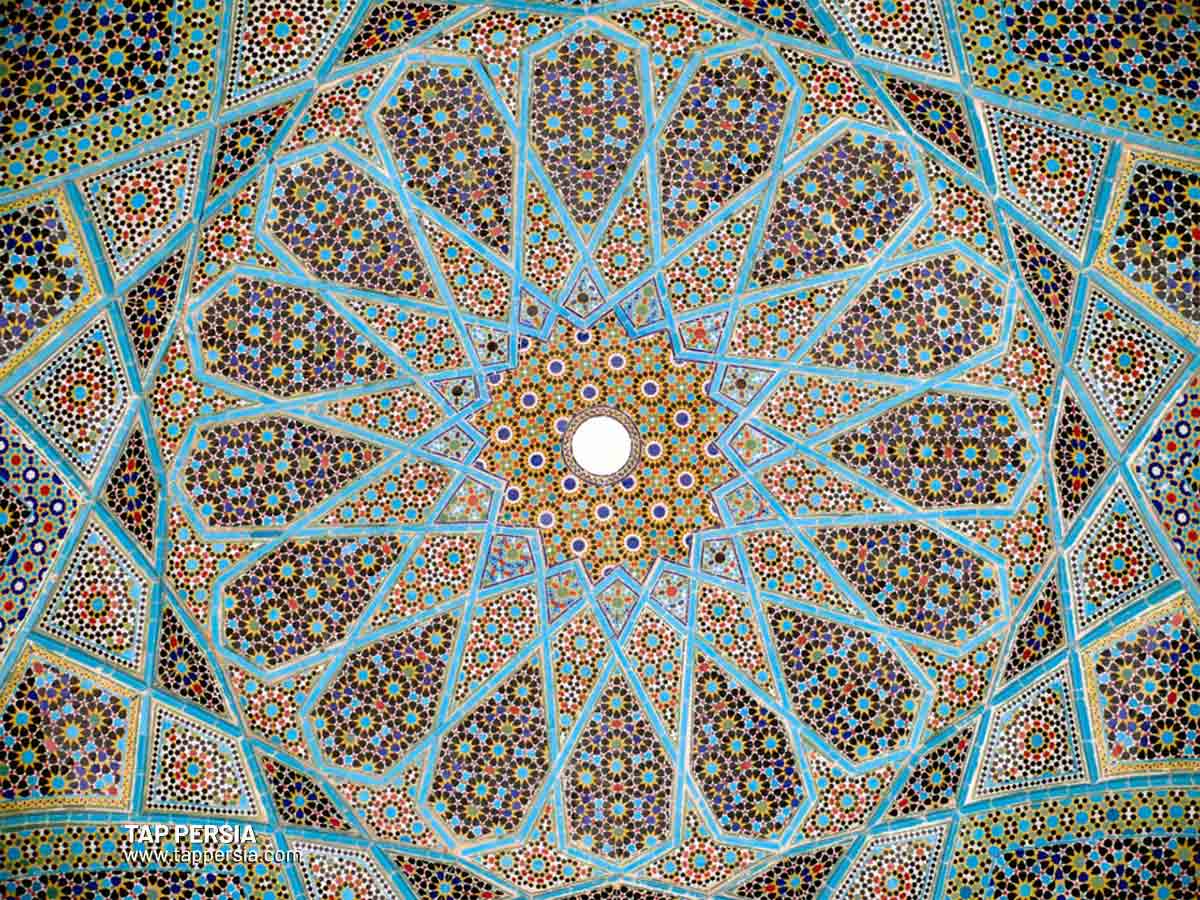
Mosques and other structures frequently employed mosaics. Despite being under Islamic dominion, Persian architecture kept using colored roofs constructed of blue, red, and green-hued ceramic tiles.
The Rise of Illumination and Calligraphy in Persian Art
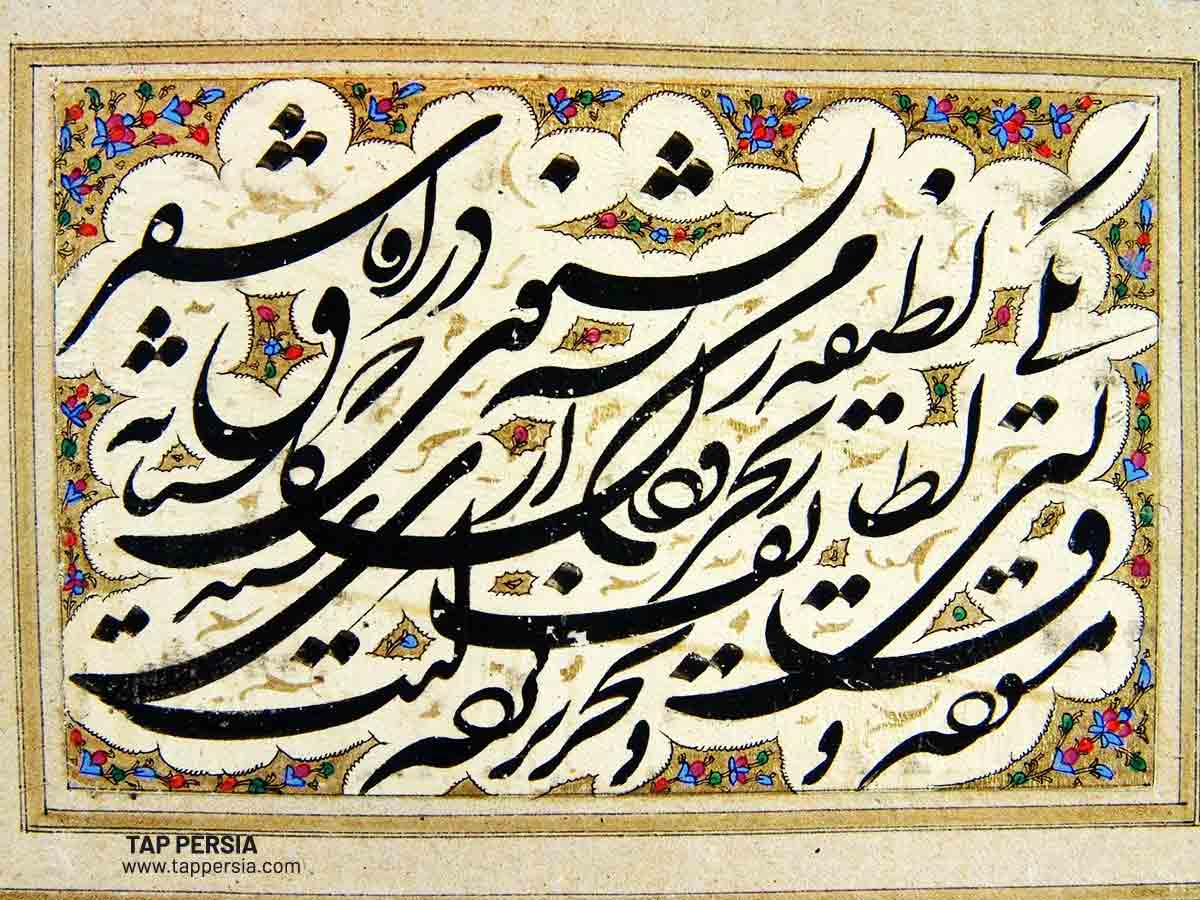
The production of figure drawings and paintings started to decline as a result of the limitations imposed on depicting three-dimensional live creatures. Illumination, on the other hand, quickly supplanted sketching as a widely practiced Islamic art form. Illumination, which originated in Persia, described the ornamentation of manuscripts and sacred writings, particularly the Koran.
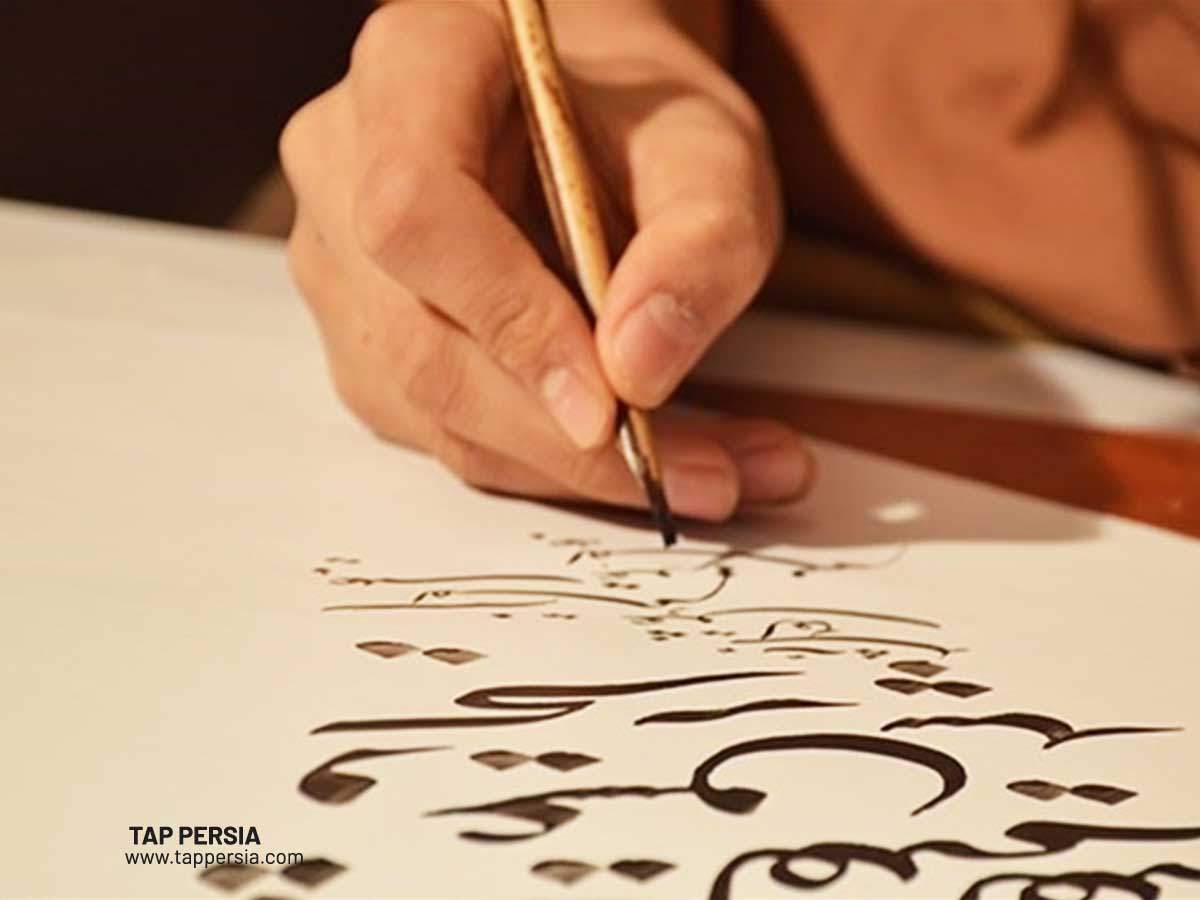
Iranian illuminators kept on producing works until the late Middle Ages, reaching its zenith between 1501 and 1722 throughout the Safavid Dynasty. Along with the Illumination, the increase in religious art replication sparked and hastened the creation of decorative writing or calligraphy.
The Development of Painting in Persian Art
In particular Persian miniature paintings were an important type of painting in Islamic Persia. A well-known Persian miniature painter named Kamal ud-Din Behzad came into prominence in the latter half of the 15th century. He is renowned for his lifelike landscape paintings and bold use of color. The Herat Academy of Painting and Calligraphy named Behzad to the position of director. In the 13th and 14th centuries, popular paintings of hunting and mountainous landscapes served as his inspiration.
In many creative civilizations, portraiture has evolved as a result of his realistic paintings. However, when painters tried to imitate European painting techniques in the late 1600s, Iranian artistic traditions started to deteriorate.
What makes Persian art famous?
As the historical realm of Persia expanded, Persian art exchanged and absorbed numerous influences from its neighbors, which had an impact on the aesthetic of the works produced.
What kind of art did the Persians create?
Architecture, Persian calligraphy, Persian pottery, weaving, painting, metalworking ,Minakari and sculpture.
What are some examples of Persian art?
A number of massive palace complexes, including those at Persepolis and Susa, embellished with sculpture, mainly stone reliefs, and the well-known “Frieze of Archers” made of enameled brick served as examples of Persian art. It is currently on display at the Louvre Museum in Paris.
What kind of art is popular in Iran?
Iranian art and handicrafts include carpet weaving, pottery, Persian miniatures, calligraphy, architecture, vitreous enamel, khatam-kari, music, and wood mosaics, to name a few.



Comment (0)